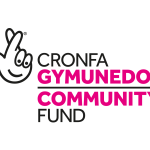 Khadijha is our support specialist for children and families – she is the heart of little brainstrust. Since July 2018 she has helped to grow our reach to support more families affected by a child’s brain tumour than ever before, offering coaching conversations, information, resources and a community.
Khadijha is our support specialist for children and families – she is the heart of little brainstrust. Since July 2018 she has helped to grow our reach to support more families affected by a child’s brain tumour than ever before, offering coaching conversations, information, resources and a community.
Tell us a bit about your role and the type of things that you do day-to-day.
My aim is to reach as many children and teenagers that are living with a brain tumour, and their families. Our brain box is an excellent starting point for information for adults but also for children and teenagers too. Each box is tailored to each family, and includes a lovely elephant knitted by a member of our community. I am also currently working on some new age-specific resources for children and teenagers, and we have just run the second Paediatric Brain Tumour Symposium in Nottingham.
What are your favourite things about your role?
I love meeting the people I support at our family fun days, and getting myself out and about into the community to as many events as possible. I am a great listener, and I like listening to my community and their needs.
What are the biggest challenges of your role?
I think the biggest challenge is that we don’t have the capacity to run as many events all over the country as we would like. Planning events can be very challenging when I work with families all over the UK.
What are your hopes and plans for your community?
I hope to grow the amount of resources available for children specifically, and to create a new website for families to access information and support online. I am also keen to grow our Facebook Parents/Caregiver support group community so that people all over the UK feel less isolated and have a safe haven to share.
What led you to apply for the role of support specialist at brainstrust?
Before this role I was a Therapy Radiographer, and have always been interested in supporting families affected by cancer. This role is an opportunity to be a continuous person of support for families impacted by childhood or teenage cancer outside the hospital. I like that I can check in with people and be there for them whenever they need, and that people feel comfortable to call me when they need to talk about what they are going through.
What is your biggest achievement with brainstrust?
I think my biggest achievement is increasing the number of people attending our events, and particularly organising two Paediatric Brain Tumour Symposiums in Nottingham. People have let us know how useful these events were for them to understand the landscape and feel supported, which is something I am very proud of.









